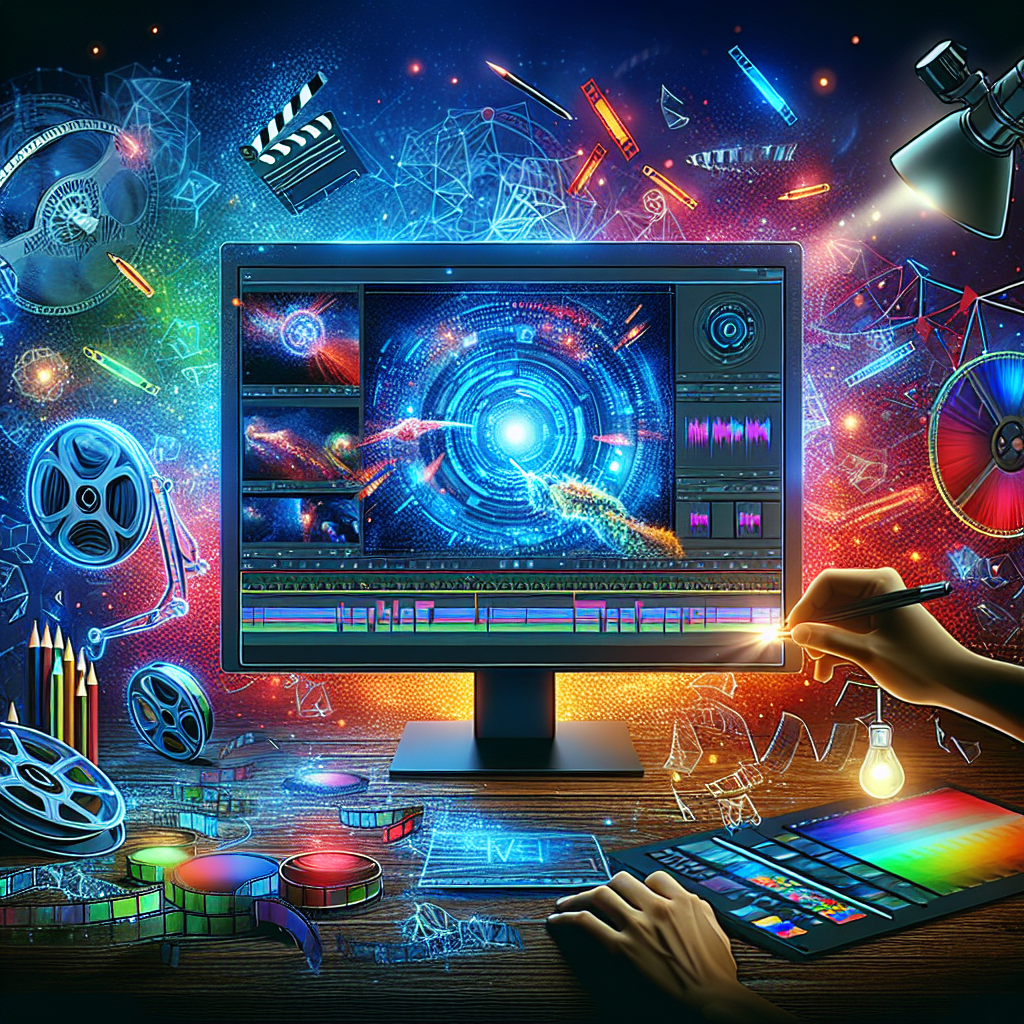
Video editing is an art form that demands precision, and the quality of the monitor plays a crucial role in ensuring the accuracy and detail of the final product. Among the various monitor technologies available, OLED (Organic Light Emitting Diode) has emerged as a popular choice. But are OLED monitors genuinely good for video editing? Let’s delve into the key features, benefits, and potential drawbacks of using OLED monitors for video editing projects.
| Feature | Traditional LED | OLED |
|---|---|---|
| Color Accuracy | Good | Excellent |
| Contrast Ratio | High | Infinite |
| Viewing Angle | Limited | Wide |
| Response Time | Fast | Extremely Fast |
| Energy Efficiency | Moderate | Efficient |
What Makes OLED Monitors Stand Out?
OLED technology is known for its superior display characteristics, primarily due to its ability to produce vibrant, true-to-life colors and outstanding contrast ratios.
Color Accuracy
OLED monitors offer exceptional color accuracy, which is vital for video editing. The self-emitting pixels in OLED screens can be individually controlled, rendering true blacks and a wider color gamut. This technology allows video editors to see the most accurate representation of their content, reducing the risk of color discrepancies during playback on different devices.
Contrast Ratio
An infinite contrast ratio is one of the hallmark features of OLED monitors. Unlike traditional LED monitors that rely on a backlight, OLED monitors can turn off individual pixels, resulting in perfect blacks and an infinite contrast ratio. This feature enhances the depth and realism of video content, making subtle details more visible.
Wide Viewing Angles
OLED monitors provide wide viewing angles without compromising image quality. This is particularly beneficial during collaborative editing sessions when multiple people need to view the screen simultaneously. Consistent image quality across various angles ensures that everyone sees the same level of detail and color accuracy.
Response Time
Fast response time is critical for video editing, especially when dealing with high-frame-rate footage. OLED monitors boast extremely fast response times, reducing motion blur and artifacts, which allows editors to work with smoother and more precise video playback.
Potential Drawbacks of OLED Monitors
Screen Burn-In
Screen burn-in is a common concern with OLED technology. Prolonged display of static images can cause permanent damage to the pixels, resulting in ghost images. However, advancements in OLED technology and proper usage guidelines can mitigate this issue, making it less of a concern for most users.
Price
OLED monitors tend to be more expensive than their LED counterparts. The superior technology and manufacturing process contribute to the higher cost. For video editors on a budget, this might be a significant consideration.
Brightness Levels
While OLED monitors excel in color accuracy and contrast, their peak brightness levels are generally lower than that of high-end LED monitors. This might be a drawback in brightly lit environments, where higher brightness levels are necessary to combat glare and reflections.
Professional Recommendations
For professional video editors who prioritize color accuracy, contrast, and fast response times, OLED monitors are an excellent choice. However, it’s essential to weigh the benefits against the potential drawbacks, such as screen burn-in and higher costs.
Here are some recommendations for professional-grade OLED monitors:
- Asus ProArt PQ22UC: Known for its portable design and 4K resolution, this OLED monitor offers stunning color accuracy and contrast, making it ideal for on-the-go video editing.
- LG UltraFine OLED Pro: This monitor features a 4K resolution and a wide color gamut, providing professional video editors with the tools they need for precise color grading and editing.
- Dell Alienware AW5520QF: While primarily a gaming monitor, its large screen size and 4K resolution make it suitable for video editing, offering excellent color reproduction and fast response times.
Conclusion
OLED monitors bring a range of advantages to the table for video editing, including superior color accuracy, infinite contrast ratios, and wide viewing angles. While they come with certain drawbacks like potential screen burn-in and higher costs, the benefits generally outweigh these concerns for most professional video editors. Evaluate your specific needs and budget to determine if an OLED monitor is the right investment for your video editing endeavors.
